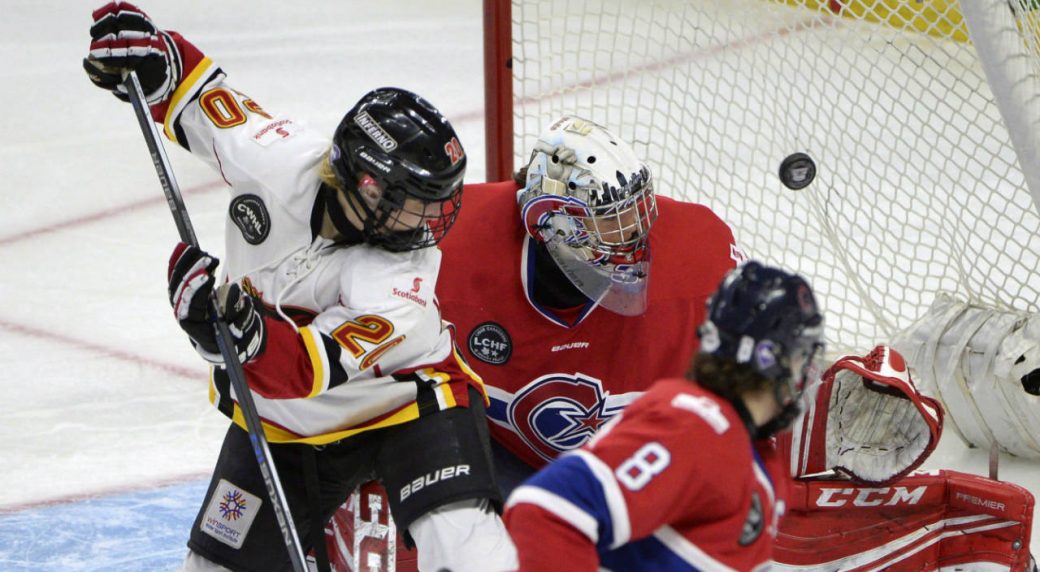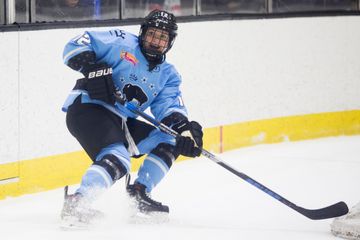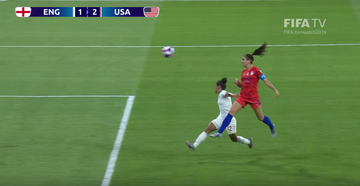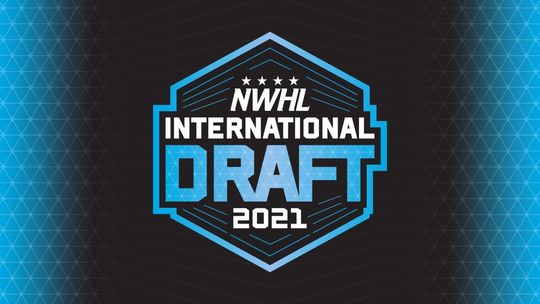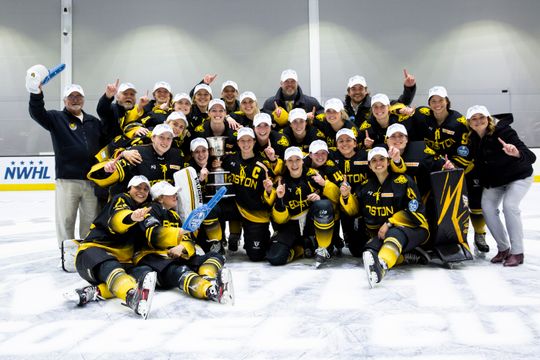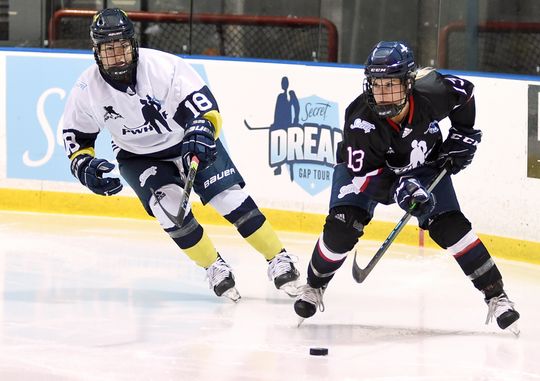When Joanna Avery and Julie Anne Stevens wrote their book Too many men on the ice: women's hockey in North America in 1997, professional women's hockey was essentially nonexistent. The CWHL was still 10 years away, and the modern-day NWHL even farther. Their book is an interesting look into what women's hockey was in 1997, compared to what it is today, illustrating what's changed – and what hasn't.
Avery and Stevens spend much of the book detailing the contemporary status of women's hockey in Canada and the United States. Largely, they discuss women and girls playing men's hockey until they "age out" due to puberty. The book also features quotes from notable names such as Cammi Granato, Angela James, and Jayna Hefford.
There were parts of this book that hit close to home for a reader in 2019. Toward the end of the book, a section is devoted to talking about the potential of professional women's hockey, and yes, a "Women's NHL":
Maybe a women's professional league wouldn't have high salaries, but many players believe that the women would most likely play anyway. Why? "I think, for themselves," commented Canadian Angela James. "I think there would be a lot of people who would play for $25,000. That would be a lot of money for a lot of people. But aside from the money aspect of things - just going in and being a part of that. I think that would be history in the making and I think people would jump on it."
James throws out the $25,000 figure as a starting point for a salary for professional women's hockey players. Factoring in inflation, that's roughly $39,889 in 2019. Meanwhile, actual salaries for many players in recent years have been as low as $2,000 to $4,000. Clearly, women's hockey still has a ways to go in this regard, which factors into the larger discussion of professional women's hockey players having to sustain jobs away from the rink. Interestingly, this was not a point that Avery or Stevens brought up in their discussion about pro women's hockey.
The authors also discuss what is needed to make a pro league successful. By and large, their points remain true today. Good athletes, public interest, proper funding and sponsors are some of the key points that Avery and Stevens discuss. Equipment suppliers, advertisers, and media and TV coverage are also critical to the authors in 1997 – and certainly are still important in 2019.
In 1997, women's hockey was on the cusp of its first Olympics, and the authors do discuss things including centralization and national teams. Now, women's hockey has appeared in multiple Olympics and international teams also appear in the Four Nations Cup and IIHF World Championships. Recently, the USWNT's fight for equal pay has added a new dimension to the discussion.
The authors suggest a post-Olympic tour to promote and gauge the interest of women's hockey as a precursor to a professional league – "instead of creating teams in six or eight cities and hoping there might be enough interest in those cities to sustain a professional team."
The now-defunct NWHL (unrelated to the current league) was created in 1999, right after women's hockey debuted at the Olympics. It disbanded in 2007, and many players joined teams in the new CWHL, which started as a player initiative. The current NWHL was formed in 2015, feeding off the hype of the 2014 Olympics. Although none of these leagues followed the authors' suggestion of a tour to gauge interest, they certainly did follow the wave of excitement after the Olympics in order to establish themselves.
The authors engage in some discussion about the difference between men's and women's hockey. Everyone has their own opinion about whether or not the two can, or should, be compared. The authors have this to say:
True, hockey is hockey, but the way the women interpret the game is different. Instead of using power and physical presence to win a game, the women use skating and brain power. That is not to say that all men's hockey games fall into the stereotype of bench-clearing brawls between players missing vast quantities of teeth -- and brains. It means that the women have something more to offer -- hockey the way it should be -- graceful, precise and fast.
Many will still try to compare it to men's hockey, and some will use that comparison to put women's hockey down; but over the years, women's hockey has proven itself to be skilled, fast, and powerful, and there certainly is a physical side to the game – just in a different way than we traditionally see in pro men's competition.
Other than the playing side of the game, this book takes a little bit of space toward the end to discuss other opportunities for women in sports: as coaches, officials, administrators, broadcasters, and journalists. In all of these areas, there has been progress made, but it's still an uphill battle in many ways. Women still face harassment and misogyny when working in sports on a daily basis.
So much has happened in those 12 years that the authors couldn't possibly have dreamed – the growth of pro women's hockey, the Olympics, discussions about equal pay and training support, the development of new media such as online streaming and social media, and so much more – and yet in many ways, women's hockey still has a long way to go, as the closing paragraph of the book says:
Whether or not players and fans believe that the women's game is distinct from the men's, one fact remains certain -- women are gradually gaining more opportunities to play, coach, referee, administer, broadcast and report on hockey. Women bring another perspective to the sport, both in playing and in watching it. There is still much ground to cover, but the women are getting there one smooth stride at a time.
Women's sports, historically, have not gotten the same attention, financial support or respect as men's sports. Although we've come a long way, sadly, a lot of the issues that were present back in 1997 are just as prevalent in 2019. Women who venture in the non-playing sides of sports often face harassment, belittling and general disrespect, particularly on the Internet and social media. Women who play sports, and in particular, hockey, are still often not taken seriously as athletes, and still do not receive the same things that male athletes receive.
Of course, this speaks to our society on a larger scale as well, and since sports are intrinsically linked to the other parts of society, it makes sense. Sports don't exist in a vacuum; even outside of the sports world, the wage gap is a real thing, sexism is real and gender discrimination still happens. As we hopefully continue to make progress as a society, so too will we make progress in the growth and respect of women's sports, including media coverage, sponsorships, opportunities for players, coaches, media, and the like.
Then again, there are still aspects relating to women's sport where it feels like society may be at a standstill, or even moving backwards. All you need to do is read the comments on a pro women's hockey player's Instagram photo, which in some cases, will focus more on her appearance and derogatory comments than anything else. Think about how little professional female athletes are being paid, compared to their male counterparts, even when the women bring in equal or more revenue. Just look at the social media posts sent to a sports reporter who is a woman when she dares to have an opinion. Women and marginalized groups face this type of abuse every day in sports in 2019.
Some things have changed, some haven't; and some certainly should.
(Photo: Justin Tang/CP)
